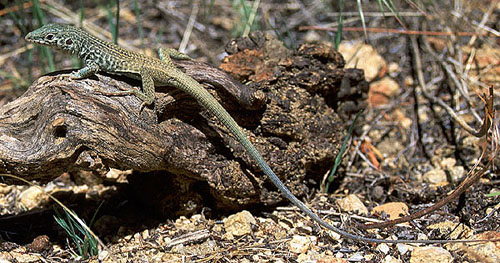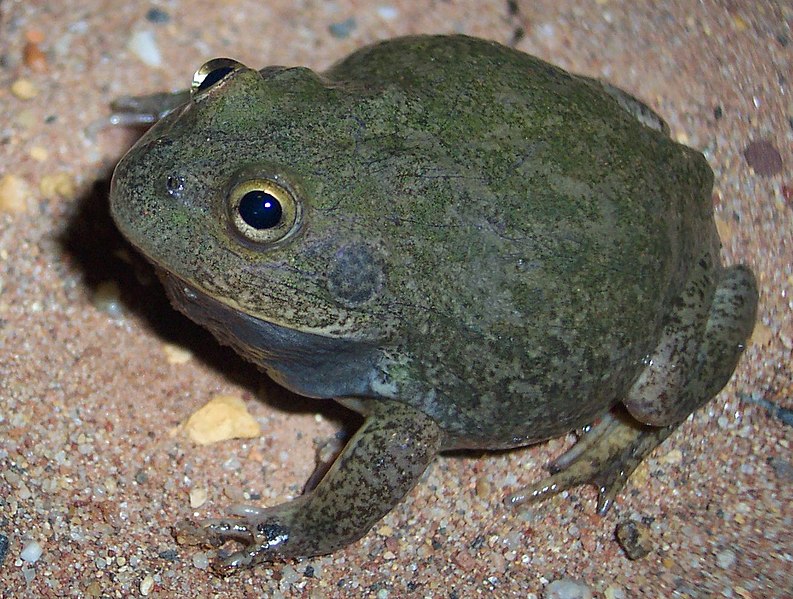Reptile and amphibian keepers are fortunate to have at our disposal a huge array of substrates, many of which are formulated for specific animals (burrowing frogs, large snakes). However, there are still a few situations, usually involving especially sensitive species, where we may need to improvise. Today I’d like to relate my experiences using “alternative” substrates for desert-dwelling reptiles and hatchling tortoises. I have long used both while working with animals in zoos, but have noticed that neither is well-known in the pet trade.
The Immune Systems of Desert Dwellers

Potential Problems with Sand
 Many of the substrates traditionally used for such creatures, including most types of sand, harbor molds and fungi when damp. Although not a problem (in limited-contact situations) for all desert animals, some are especially sensitive and quickly succumb to skin and respiratory infections.
Many of the substrates traditionally used for such creatures, including most types of sand, harbor molds and fungi when damp. Although not a problem (in limited-contact situations) for all desert animals, some are especially sensitive and quickly succumb to skin and respiratory infections.
Chief among these in my experience are Egyptian tortoises (Testudo kleimanni), padloper tortoises (Homopus signatus, the world’s smallest tortoise) and several of the whip-tailed lizards (Cnemidophorus spp.).
Using Oyster Shell
Oyster shell (available at garden and poultry supply stores) does not support the growth of fungi or mold, is benign when swallowed in small amounts, and can be easily spot-cleaned and discarded when fouled. I cannot recall any skin or respiratory problems in desert-dwelling reptiles maintained on oyster shell.
Further Reading
You can read more about fungal and other respiratory ailments in tortoises at: http://www.azeah.com/Care-Sheets.asp?id=125
Tortoise photo referenced from Wikipedia and originally posted by Stefano Alcini.
 That Reptile Blog – Reptile, Amphibian and Exotic Pet Care and Information
That Reptile Blog – Reptile, Amphibian and Exotic Pet Care and Information

 Tarantulas often line terrarium glass with silk, thwarting our efforts to observe them. However, they are less likely to do this if you cover the outside of the glass (that portion that fronts along the burrow) with black paper or cardboard, hinged at the top with tape. If you lift this gently, the spider may remain on view.
Tarantulas often line terrarium glass with silk, thwarting our efforts to observe them. However, they are less likely to do this if you cover the outside of the glass (that portion that fronts along the burrow) with black paper or cardboard, hinged at the top with tape. If you lift this gently, the spider may remain on view. Some years ago I acquired a group of Australian water-holding frogs (Cyclorana platycephala) and found them to be among the amphibian world’s most accomplished burrowers. To learn more about these amazing creatures, please see
Some years ago I acquired a group of Australian water-holding frogs (Cyclorana platycephala) and found them to be among the amphibian world’s most accomplished burrowers. To learn more about these amazing creatures, please see  Surinam toads, mata-mata turtles, axolotls, mudpuppies and other wide-mouthed aquatic animals that utilize suction (the flow of water into the gaping mouth) to capture prey quite frequently swallow gravel in the course of feeding.
Surinam toads, mata-mata turtles, axolotls, mudpuppies and other wide-mouthed aquatic animals that utilize suction (the flow of water into the gaping mouth) to capture prey quite frequently swallow gravel in the course of feeding. Well, we’ve come a long way since the anole “sugar water days” (the recommended diet for green anoles sold at circuses in the 1960’s). Following is a mix that I and others have found useful for anoles, geckos, basilisks, skinks and others.
Well, we’ve come a long way since the anole “sugar water days” (the recommended diet for green anoles sold at circuses in the 1960’s). Following is a mix that I and others have found useful for anoles, geckos, basilisks, skinks and others.